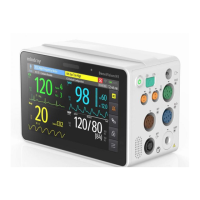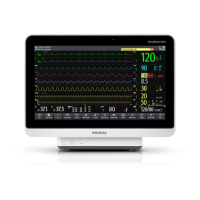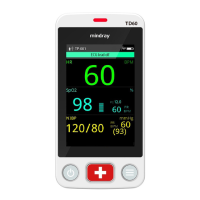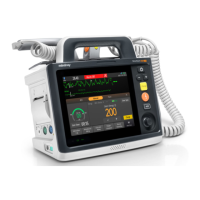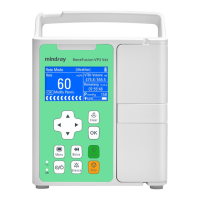A-7
Common mode rejection ratio
(with Notch off)
Diagnostic mode:
Monitor mode:
Surgical mode:
ST mode:
>90 dB
>105 dB
>105 dB
>105 dB
Notch 50/60 Hz
Differential input impedance ≥5 MΩ
Input signal range ±8 mV (peak-to-peak value)
Accuracy of reappearing input signal
Use A and D methods based on EC11 to determine system total error and
frequency response.
Electrode offset potential tolerance ±500 mV
Lead-off detection current
Measuring electrode: <0.1 A
Drive electrode: <1 A
Input offset current
Measuring electrode: ≤0.1 A
Drive electrode: ≤1 A
Baseline recovery time
Enduring 5000V (360 J) charge without data loss or corruption
Baseline recovery time: <5 s (after defibrillation)
Polarization recovery time: <10 s
Defibrillation energy absorption: <10% (100Ω load)
Patient leakage current <10 A
Calibration signal
1mV (peak-to-peak value)
Accuracy: ±5%
ESU protection
Cut mode: 300 W
Coagulate mode: 100 W
Recovery time: ≤10 s
In compliance with the requirements in clause 202.6.2.101 of IEC60601-2-27
Pace Pulse
Pace pulse markers
Pace pulses meeting the following conditions are labelled with a PACE marker:
Amplitude:
Width:
Rise time:
±2 to ±700 mV
0.1 to 2 ms
10 to 100 µs
Pace pulse rejection
When tested in accordance with theIEC60601-2-27: 201.12.1.101.13, the heart rate
meter rejects all pulses meeting the following conditions.
Amplitude:
Width:
Rise time:
±2 to ±700 mV
0.1 to 2 ms
10 to 100 µs
Sampling rate
500 samples/s (A/D)
500 samples/s (ECG algorithm)
Accuracy 2.44 V/LSB
HR
Measurement range Neonate:
Pediatric:
Adult:
15 to 350 bpm
15 to 350 bpm
15 to 300 bpm
Resolution 1 bpm
Accuracy ±1 bpm or ±1%, whichever is greater.
Sensitivity 200V (lead II)
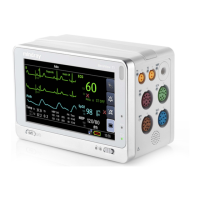
